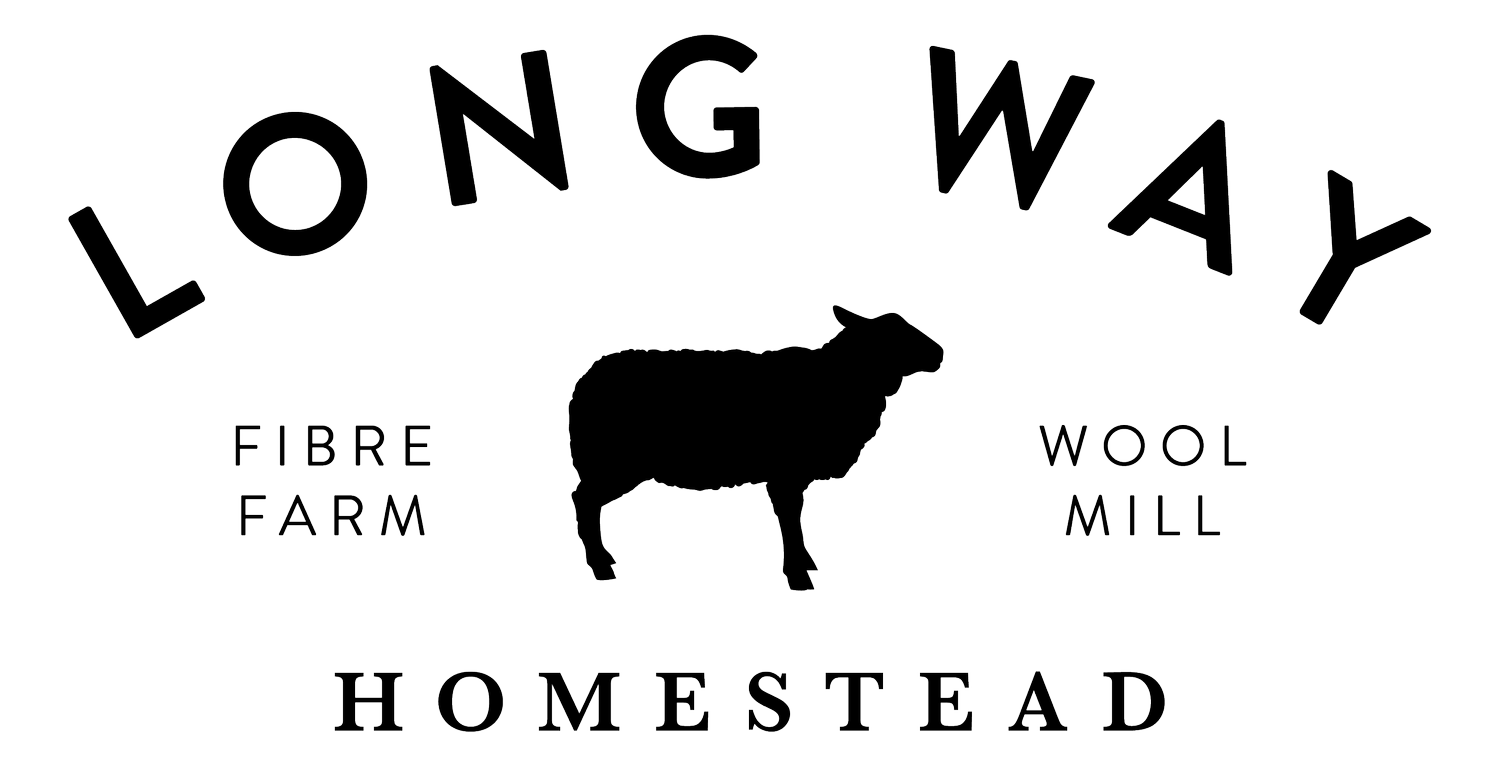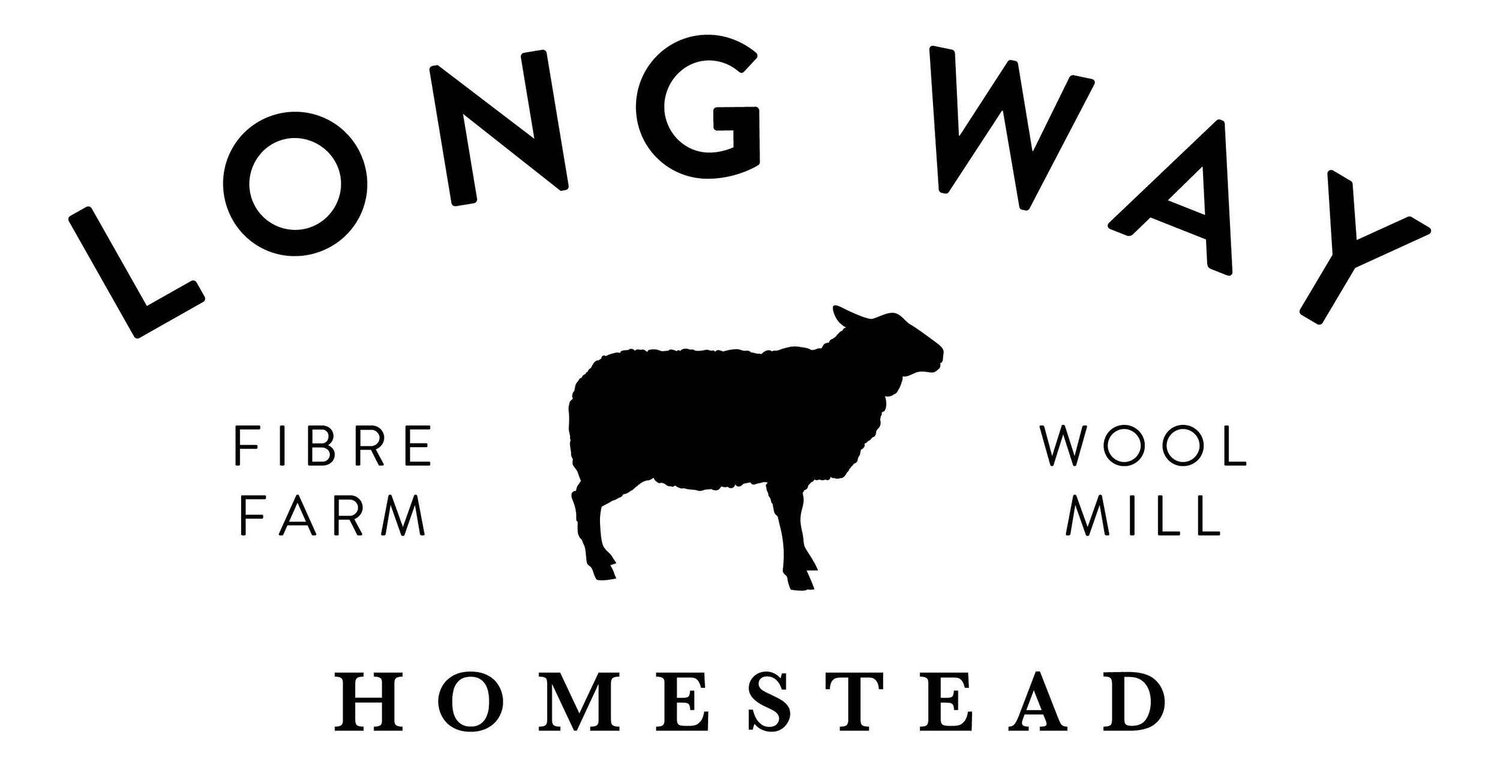The Effect of Drought on Wool Production
I was in my local yarn shop the other day and overheard a few folks talking about the current drought situation we are facing in Manitoba and how it's made knitting outside extra challenging because it is just too damn hot. I bit my tongue and bought the second replacement felting needles for my son (who perhaps is a bit too clumsy at this pre teen stage to use sharp/thin needles) and didn't give them my 2cents on the real challenges of the drought. This got me thinking, however, about how important it is that the broader fibre community understand the implications of this drought on our beloved wool.
Whether consumers are buying wool from local fibre farmers, or from large commercial yarn companies the effect of climate change will change the face of our industry. Not every farming community in Canada faced drought this year, in fact in Eastern Canada many farms struggled with too much moisture which also resulted in feed shortages. The prairies and Northern USA has been experiencing record breaking weather all season.
Conditions as of July 31, 2021
According to the Canadian Drought Monitor, Southern Manitoba has been under the classification of extreme drought which is having devastating effects on land and agriculture. With extreme high temperatures and little to no precipitation it has extreme consequences for farm and pasture land:
Drying out of pasture and range land
Decrease in yield of crops, feed crops and hay crops
Drying out of water dug outs and surface water
Increased wildfires
(Canadian Drought Monitor. July 2021)
It is a difficult and desperate time for many farmers who are struggling to feed animals, and plan for an uncertain future. The impact of decreased yields for all farmers will be felt around the world, most immediately for our food supply. But how will this drought impact our wool and textiles?
Perhaps the biggest impact that severe droughts have on sheep farms is the overall reduction in animals. Farmers must make hard decisions to ensure the health and productivity of a smaller number of sheep. Hay and feed prices have in some cases doubled making it financially challenging for farmers to feed all their sheep, or hay is not even available due to extremely low yields. More farmers are being forced to sell off or cull extra sheep to maximize the health of the rest of their flock. This will cause an overall decrease in the quantity of available wool in the coming year and a financial strain on those farmers.
Canada has not experienced drought conditions like this in recorded history, and even in similar drought seasons (1988 – 1989) there was not much collected data on the effect of drought on wool production. Data and information can be gathered from other wool producing nations that have experienced drought, such as Australia. Although overall environmental conditions are quite different, we can draw some comparisons on how drought conditions impact wool quality.
Drought conditions effect forage and water resources, this will impact the nutritional value and growth of pasture and feed crops. Overall wool health is linked to the nutrition of the sheep and any significant changes will be reflected in both the quantity and quality. Healthy wool growth requires nutrients such as amino acids, carbohydrates and protein. When these nutrients are not available in sufficient quantity the overall fleece yield is reduced. To make matters worse, lack of sufficient forage in drought seasons will also have a long lasting impact even after drought episodes.
Ewes that are bred during seasons of drought may grow lambs with lesser quantities of fleece. Lamb fetal development is impacted by the condition and health of the ewe. During the final two months of gestation the fetus is growing all of its secondary follicles. Once the lamb is born the number of follicles they developed is permanent and results in less fleece growth during its entire lifetime. With less nutritious pastures and hay crops farmers could see an overall decrease in the quantity of wool for years to come. (Wool Wise, 2014)
The quality of wool fibre will also be compromised by severe drought conditions. Particularly the staple length, strength and the fibre diameter. Sheep that are fed drought rations will experience cellular changes at the follicle level. This will mean shorter staple length and finer or uneven fibre diameters. In severe cases of drought with prolonged inadequate nutrition some follicles will stop producing fibre all together. Furthermore in can take up to 3 months for follicles to begin producing fibre even after a proper nutritious feed has been returned. (Wool Wise, 2014)
We know that staple length and staple strength affect the durability and elasticity of our yarn, so a decrease in staple health could mean yarn that it wont be as durable. In severe cases of staple weakness some wool may not even be suitable for yarn production at all. The drought of 2021 will undoubtedly affect the mean staple strength of the 2021 wool clip, but also could compromise wool grown in 2022 if drought conditions persist or if sheep cannot recover in time prior to shearing. This could potentially compromise two years worth of wool quality.
The fibre diameter of wool is also affected by the nutrition of the sheep. In some cases we see the fibre diameter become smaller or larger in under-nutrition feeding systems, such is the case during droughts. There will be inconsistency in the diameter along the staple length and thus lead to increased weakness in the fibre. There will be the potential for more breakage along the staple of the fibre and an overall degradation of the 'feel' and quality of the fibre. (Harle, K.J & Howden et al).
The cleanliness of the wool is also affected by drought. This is quite severe in Australia where the drought has persisted for many years and has been accompanied by devastating dust storms. Australian sheep farmers have seen a drastic change in the dirt content of their wool clip. This means the wool is more difficult to scour and thus worth less per pound at market. The Canadian prairies has a different landscape than Australia. But the drought conditions have resulted in more topsoil loss and dustier conditions for sheep that graze and live outside. The overall cleanliness of the wool can be affected and would make scouring and thus marketing more challenging.
(Photo From ABC News in Australia, Franklin Hood)
Severe drought conditions have devastating effects on the land, plants, animals and our biosphere. The climate crisis is contributing to severe weather extremes around the world including drought. The long-term impact on our wool and textile industry could be devastating. But in many ways our existing textile industry is contributing to the very cause of its demise. Unfettered textile consumption and production is contributing to greenhouse gas emissions at an unprecedented rate. Run off from scouring and dyeing facilities is polluting fresh rivers, lakes and underground aquifers. The global transport of raw wool and then finished textiles is adding even more carbon to the atmosphere. So how can the textile and wool industry survive these extreme weather events and also decrease it's overall carbon footprint?
How to support fibre farmers during this time:
Reach out and check in, ask how the drought has affected them and their flock?
Support their business by purchasing wool, yarn, fibre and other things
Donate to fibre farmers or organizations that support farmers
How farmers and processors can adapt to drought:
Implement land management strategies that work to retain moisture. Many regenerative farming practices will help with water retention and prevent soil erosion: cover crops, managed grazing, shelter belts.
Minimize the consumption of water or recycle water for scouring, dyeing and processing of fibre
Keep our supply chain local and minimize the emissions caused by transporting raw and finished goods
Citations:
Canadian Drought Monitor https://agriculture.canada.ca/en/agriculture-and-environment/drought-watch-and-agroclimate/canadian-drought-monitor )
Harle, K.J. & Howden, Stuart & Hunt, L.P. & Dunlop, Michael. (2007). The potential impact of climate change on the Australian wool industry by 2030. Agricultural Systems. 93. 61-89. 10.1016/j.agsy.2006.04.003.
Wool Wise, The Australian Wool Education Trust, 2014 https://www.woolwise.com/wp-con



